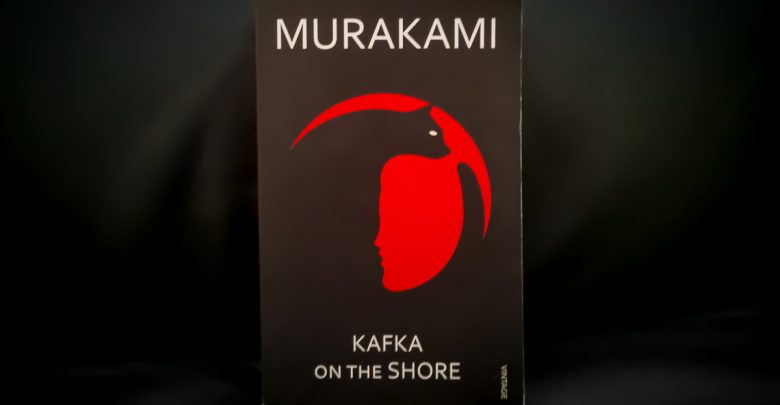Book Review: Kafka on the Shore
Intellectual headiness and copious ambiguity make this novel a gripping tale
 Andrew McWhinney
Andrew McWhinneyDo you like your art to make you feel super weirded out? Do you find great pleasure in not being able to distinguish illusion from reality?
Oh boy, does Haruki Murakami have the book for you.
Kafka on the Shore is a tale that follows two threads. The first focuses on a teen who flees home in order to escape the Oedipal curse laid upon him by his father.
On his fifteenth birthday, the boy flees his home prefecture, takes on the name Kafka Tamura, and eventually finds refuge working in a private library. It’s here he meets Oshima, a 21-year-old trans man well-versed in many intellectual aspects, and Miss Saeki, the head librarian. These characters assist him along his journey to flee his father’s curse and forge his own destiny.
The second thread follows Nakata, an old man who can talk to cats and makes part of his living finding peoples’ lost felines. Nakata is illiterate and has great difficulty visualizing abstract concepts, a result of him losing all of his memories and cognitive functioning after a suffering a coma as a child.
After a run-in with an evil sculptor who’s been killing cats to turn their souls into flutes (don’t worry, it kind of makes sense in context), Nakata begins on a long journey hitchhiking across Japan, only realizing its purpose in small chunks as the plot progresses. Along the way he meets Hoshino, a lorry driver who casually leaves his life behind to aid Nakata on his indeterminate quest.
Slowly but surely the two threads begin to leave together, albeit never tightly braiding together. Part of this looseness comes from a lack of stability seen throughout the novel. Characters and symbols aren’t always fixed, and plot points don’t always resolve into neat conclusions. There’s a very shaky line between reality and a higher metaphysical plane, making it ambiguous as to whether some characters are real people or just ghost-like visions.
As such, the characters don’t all meet in a climactic final moment; they flit into and out of each other’s lives, tied up in fate but not in relation.
The result is a text that’s incredibly alienating, full of self-doubt and anxiety. Instead of getting moments of reassurance, we as readers are told, like the characters in the novel, to wait it all out between long gaps of time where seemingly nothing happens at all. These pauses end up being rich spaces for reflection and self-development for many of the characters, and it’s in some of these pauses that I was truly sucked in.
Beyond general atmosphere, this novel’s writing is ornamented with countless references to literature, philosophy, and music. Murakami spends whole pages showing debates between characters’ interpretations of different works, whether it be Oshima and Kafka discussing Franz Kafka’s “In The Penal Colony” or Hoshino waxing over various performances of Beethoven’s “Archduke Trio.” A sex worker (who happens to be a philosophy student) quotes Hegel and Bergson, and her pimp is a self-described “abstract concept” that takes on the form of KFC’s Colonel Sanders. Oshima casually namedrops Freud and Jung in his conversations with Kafka.
The list goes on. While these ornamentations are great fun for nerds like me, who can gleefully point to the page and exclaim, “Hey, I know that guy!”, some readers are bound to get bogged down in the countless names that Murakami throws at them.
Despite all the negative affect this book generated for me, I devoured its 623 pages in just two days. It completely consumed not just my time, but my life. If you’re looking for that kind of literary experience, this novel is for you.




